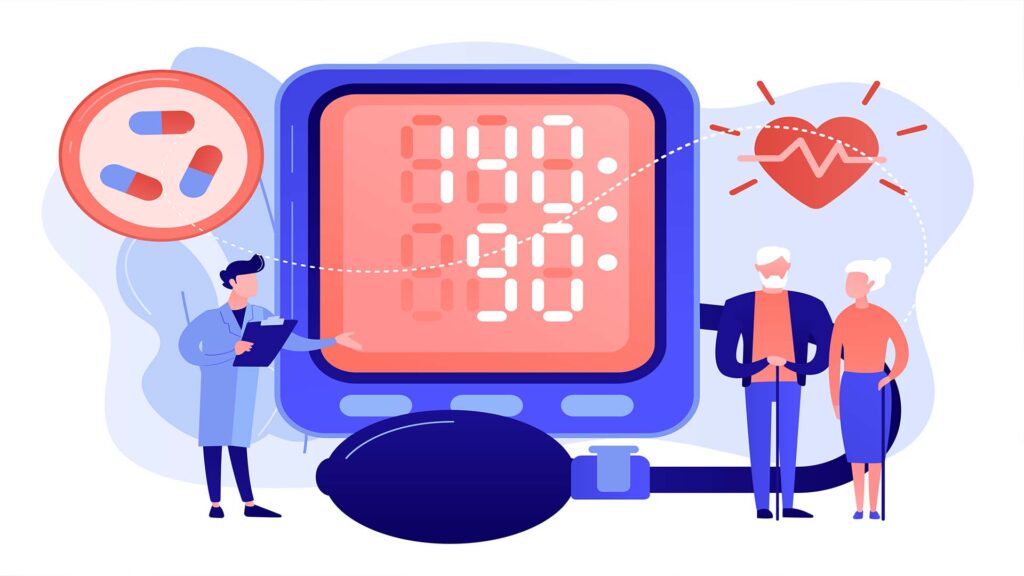Blood Pressure Diet Plan
Blood pressure (BP) is the force of blood against the walls of arteries as it is pumped by the heart throughout the body. It is measured in millimeters of mercury (mmHg) and consists of two numbers: systolic pressure and diastolic pressure. Systolic pressure represents the force when the heart contracts and pumps blood out (during a heartbeat), while diastolic pressure represents the force when the heart relaxes between beats.

Why choose Our Controlled Blood Pressure Diet Plan?
Choosing a controlled blood pressure diet plan offers several important benefits for individuals looking to manage their blood pressure and improve overall health:
Blood Pressure Management
A controlled blood pressure diet plan is specifically designed to help regulate blood pressure levels within a healthy range. By emphasizing nutrient-rich foods and minimizing sodium and unhealthy fats, this diet plan can support better blood pressure control.
Heart Health
High blood pressure is a significant risk factor for heart disease, including conditions such as coronary artery disease, heart attack, and stroke. A controlled blood pressure diet plan focuses on heart-healthy foods such as fruits, vegetables, whole grains, lean proteins, and healthy fats, which can help reduce the risk of cardiovascular complications.
Reduced Risk of Complications
By effectively managing blood pressure through diet, individuals can lower their risk of complications associated with hypertension, such as kidney disease, vision loss, and peripheral artery disease.
Weight Management
Many controlled blood pressure diet plans also support weight management goals, which can further contribute to improved blood pressure control. By promoting a balanced intake of nutrients and encouraging portion control, these diet plans can help individuals achieve and maintain a healthy weight.
Lower Sodium Intake
Excess sodium consumption is known to contribute to high blood pressure. Controlled blood pressure diet plans typically emphasize reducing sodium intake by limiting processed foods, canned goods, and restaurant meals high in sodium. This can help individuals achieve better blood pressure control and reduce the risk of hypertension-related complications.
Nutrient-Rich Foods
A controlled blood pressure diet plan focuses on incorporating nutrient-rich foods that provide essential vitamins, minerals, antioxidants, and fiber. These foods not only support blood pressure management but also contribute to overall health and well-being.
Balanced Macronutrients
Controlled blood pressure diet plans typically emphasize a balanced intake of carbohydrates, proteins, and fats to support overall health and energy levels. By providing a balanced mix of macronutrients, these diet plans help individuals maintain stable blood sugar levels and prevent spikes and crashes that can affect blood pressure.
Customization and Flexibility
Many controlled blood pressure diet plans offer flexibility and customization to suit individual preferences, dietary needs, and cultural backgrounds. This allows individuals to create a sustainable eating pattern that fits their lifestyle and promotes long-term adherence to healthy eating habits.
Professional Guidance
Choosing a controlled blood pressure diet plan often involves guidance from healthcare professionals, such as registered dietitians or nutritionists, who can provide personalized recommendations and support. This professional guidance ensures that individuals receive evidence-based advice tailored to their unique needs and goals.
Improved Quality of Life
By adopting a controlled blood pressure diet plan, individuals can experience improvements in blood pressure control, overall health, and quality of life. Better blood pressure management can lead to increased energy levels, improved mood, and reduced risk of complications, allowing individuals to enjoy a healthier and more active lifestyle.

